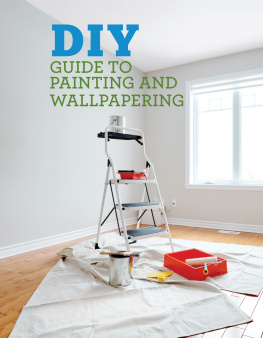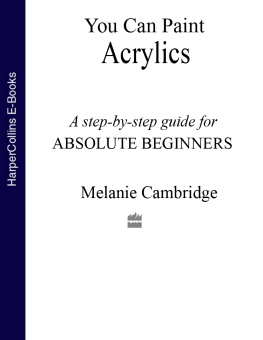How to Paint Your House
by The Ebook Handyman
Copyright 2013 Russ Merritt
Smashwords Edition
This eBook is licensed for your personal enjoymentonly. This eBook may not be re-sold or given away to other people.If you would like to share this book with another person, pleasepurchase an additional copy for each recipient. If youre readingthis book and did not purchase it, or it was not purchased for youruse only, then please return to smashwords.com and purchase yourown copy. Thank you for respecting the hard work of thisauthor.
Table of Contents
Paint Calculator
Flips and Rentals
Safety, Storage and Disposal
Troubleshooting
This book is your beginners DIY manual anda reference to consult for deeper questions and trade secrets.Consult the Table of Contents to skip to the section that providesthe information you need for the project you have. My goal is tocondense years of experiential wisdom into a book that would takeyou about an hour to read through, but will most effectively beused as a resource to coach you and troubleshoot your way throughsaving tons of money and gaining pride in your work throughpainting your own home. As a handyman, homeowner and real estateinvestor, this book represents a condensed version of the best ofwhat Ive learned about painting from various professional mentorsin each sphere.
The first step is to get to know the basicsof different paints available in the market. Most paint supplystores offer a wide variety of types and brands of paints. Storeassociates are generally knowledgeable about the paints they carry,and can usually advise you on color choice, as it is hard to get afeel for the finished product with only a small color swatch.
If a thumb sized color swatch isinsufficient to make a decision on (it isnt for me most thetime!), small color samples can be ordered in small quantities soyou can section on a wall to see how it dries and make a moreinformed decision. If the process of choosing a color is prolongedby a week or more, paint the trial wall space behind a couch,poster or easily moveable item, so that youre not rushed to finishthe job because you have an unsightly blotch of paint on yourwall!
A great digital tool to use for colorselection is a paint color visualizer. Sherwin Williams has a greatone on their website which allows you to upload photos of yourhome, and impose a new color on top of your existing walls.
Latex is standard for interior and exteriorprojects for its ease of use and water-solubility, but here is alist of popular paint types in case you need options forexceptional jobs:
Enamel
Enamels are more like pigmented varnish andmake a tough coating on most surfaces. The end result iseasy-to-clean and very durable. They are oil-based and mostly usedfor exterior painting. They can be used on windows, trims and doorsinside the house.
Aluminum Paint
When you are painting the exterior of thehouse, you would want a paint that is resistant to weathering andclimatic changes. Aluminum paint is a great choice for exteriorpainting and it can be used on wood and metal surfaces. Aluminumdoes not conduct heat, which also makes it great for paintingductwork. This is cheaper than aluminum tape and will save youmoney on heating and cooling.
Acrylic
There are two kinds of acrylic paints: oneis a combo with epoxy and one is a polyurethane coating. Both typesare excellent for painting on surfaces that are subject to hard usebecause they are resistant to staining, chipping and are easilywashable. You can use them on most construction materials andmetals. You can paint garage floors, porch floors or storage areaswith it. Acrylic is more toxic than latex, and is notwater-soluble. It is good for exterior paint in areas with extremeweather changes, as it expands and contracts with the cold and heatbetter than latex.
Latex (Emulsion in UK)
This is a water-based paint and is veryquick drying and does not have the typical odor associated withpaints. If you need quick results, then you should use this paint.It also needs primer on some surfaces. It is most popularly usedfor interior painting, since it can be cleaned easily with waterand is environment friendly.
Each kind of paint is meant to produce adifferent finish and their usage depends on the type of surfacethat is being painted. Using the wrong kind of paint on your wallor ceiling might not give you good results and would ultimatelyneed a redo. You also need to differentiate between exterior andinterior paints. The different types of paints are meant to be usedaccording to the conditions they are going to be subjected to.Exterior paints are usually weather resistant and are offered incolors that do not fade easily in direct sunlight. Interior paintsare less toxic, are washable and have a wider range of colors. Youcan balance the colors being used inside and outside the house.
In order to find out how much paint you willneed, first roughly calculate the area of the room you have topaint. 1 gallon of paint can cover 350 square feet. You should buya little more than the calculated amount, so that you can have someleftover for touchups. The last thing you want to do is under buyand interrupt your paint job with a run to the store. If half awall dries, and you paint the other half later, this can negativelyaffect the end result. Be sure to check with the store beforebuying extra, to make sure you can return unopened cans.
Most of these paints need a primerunderneath for the perfect finish. A primer is a kind of paint andit is used to fill up any small pores in the surface and provide atacky base for the final paint. It is also needed to neutralize thebase color if you are switching from darker shades to lighter ones.This means you need to prime the surface to get a smooth canvasthat will hold the paint in its place for a longer time. You haveto make sure that the walls are not uneven because that is going toadversely affect the finishing of your paint. Try to scrape off anyexisting access paint on the surface to smoothen it out. You canfind details about the different tools that you will need, for allpossible jobs related to getting your house painted, in the nextsection.
Before you set out to paint your house, makesure you have the right tools and accessories that you need.Consult the checklist prior to starting the job and your projectwill go much smoother. Depending on the job and paint type or toolsused, you do not need everything on the checklist, but use it tojog your memory.
Brushes
Synthetic brushes for latex paint
Natural bristle brushes for oil-based paint
1-2 angled brushes for trim
3-4 flat brushes for flat surfaces
Small paint holder (better than holding paint can forcutting ceiling edge)
Rollers
Large rollers for covering space
Small rollers for tight areas
Rolls (thick for textured, thin for smoothfinish)
Roller paint tray (also buy cheap inserts for easycleanup)
Roller extension
Spray Guns
Facemask (high quality with filter- not flimsydisposable ones)
Goggles
Plastic rolls for covering floor
Shield
Brushes
If you use the correct type of brush for thespecific tasks, then your job will be much easier. You may havenever noticed that brushes are made from different materials andthat also makes a difference. There are many brands to choose fromand you can buy the brushes according to our budget. Try not tofall prey to the promotions associated with cheap brushes butinstead look for good quality material that is affordable.
If you are using water-based paints then tryto go for brushes with synthetic (Nylon or Polyester) bristlessince they do not lose their shape when they get soggy. But pleasekeep in mind that the stiffer a brush is, the more trails it willcreate on the finished surface. Acrylics, shellac and latex paintcan be painted with polyester-synthetic brushes, which are composedof split-ended bristles and straight brushes.
Next page







